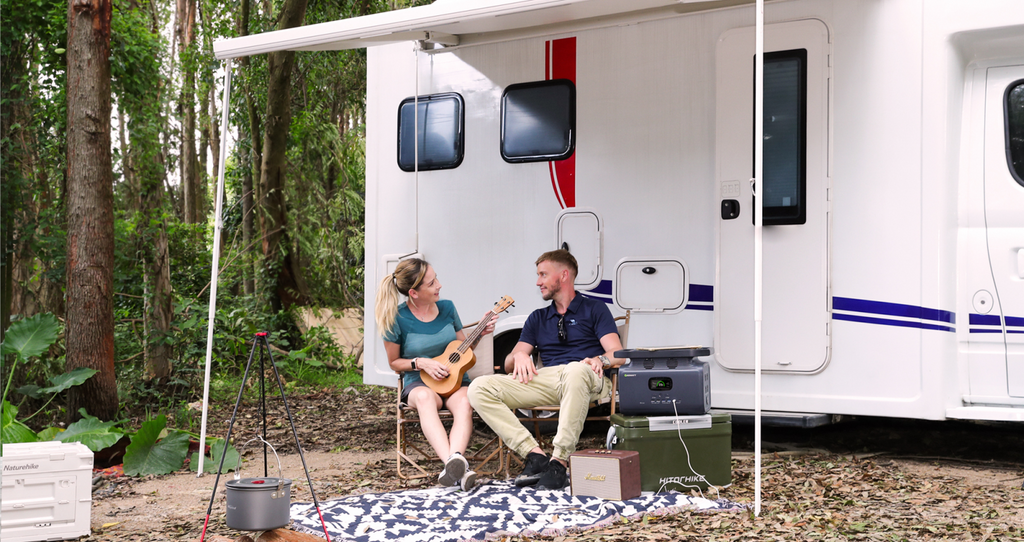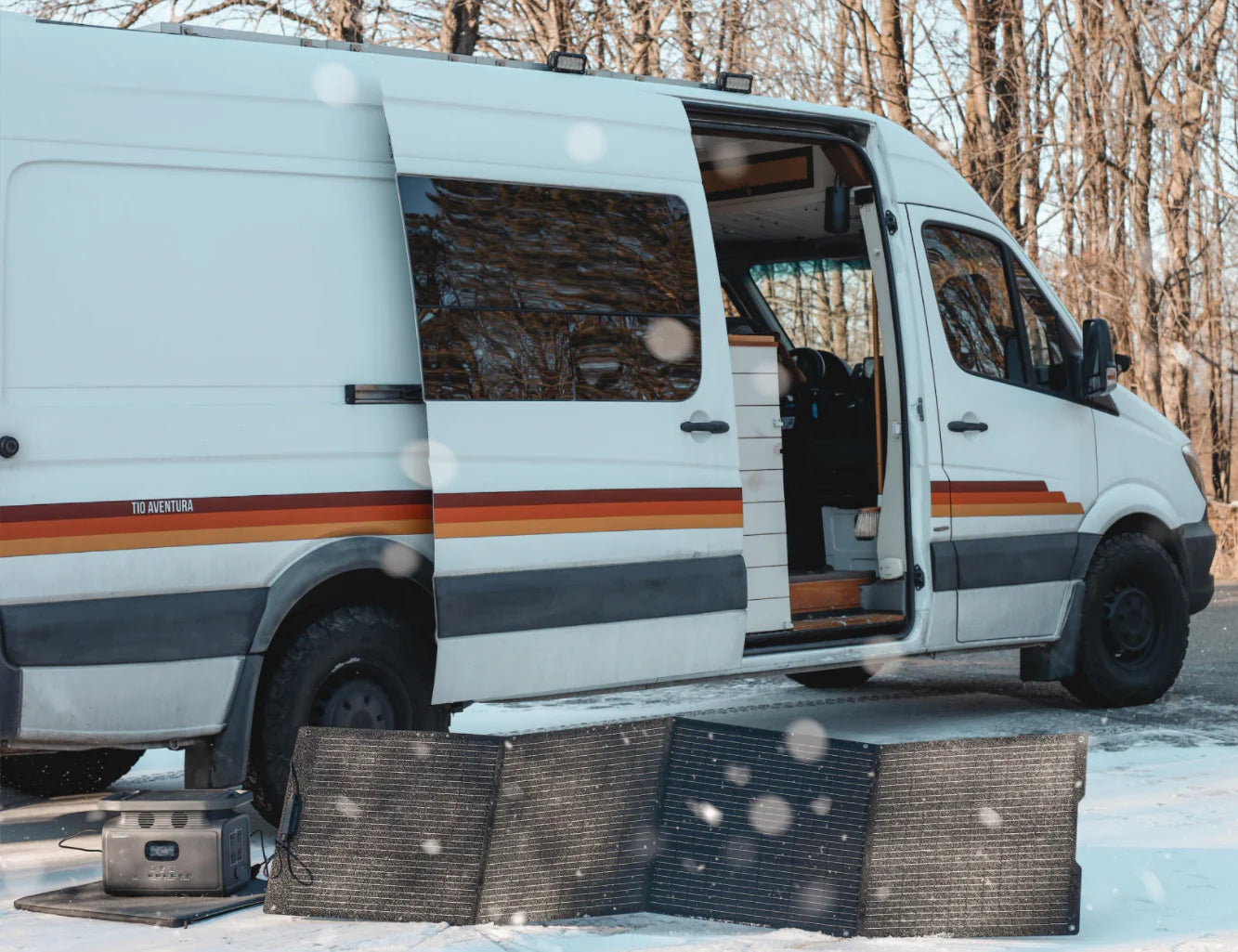While you're cruising down the highway in your RV, nothing else matters at that time. The world is your oyster, and your comfort is everything. But wait a second, what about your gadgets and appliances? They need power, and that's where an inverter comes into the picture!

An inverter is like a magic box taking battery power and converting it into the type of electricity your microwave and TV are designed for. Now, before you think you can use any inverter, hold up! Size matters, and starting with at least a 1000-watt inverter is the way to go. Be it your morning coffee brew or all the seasons of your favorite show, proper inverter size selection for your RV comes first.
Choosing the right inverter size will ensure that your road trips are not just limited to scenic views but also about comfort and convenience. So, buckle up as we go on a quest for your most suitable inverter match!
Calculating Your Power Needs
Your RV is like a hungry animal - what does it need to keep its belly full? Power, and loads of it! Just how much? Let’s find out.
First, write down all of your appliances. Yes, including the little night light! Now check their individual wattages—usually, it's written on a sticker or in the manual. Add up all the wattages once you’re done listing out all your appliances. This sum is your RV’s basic power requirement.
But that's not all! Appliances often require more power to start up. So, let's play safe and multiply your total by 1.2. This is your daily requirement. It covers those sneaky start-up spikes. If, for instance, your microwave draws 1200W, your TV pulls in 150W by itself, and your coffee maker sucks in 600W all on its own, then you would have totally consumed 1950W of power. Multiply that by 1.2, and you’ll be needing an inverter with at least 2340 watts.
Size Recommendations
Choosing the right inverter size is like picking the perfect hat - it needs to fit just right! Here’s a handy guide:
- Basic/Light Use (1000W+): If the RV life is all about chilling with your phone and catching up on TV shows, then the 1000W+ pure sine wave inverter is your best bet. It’s just perfect to keep things mild and easy.
- Moderate Use (2000-3000W): And now, if you're adding more appliances like a blender for smoothies or a hairdryer so you don't look like you've been in a wind tunnel, aim for 2000-3000W. This range powers your appliances easily without overkill.
- Frequent Use (3000-4000W): For more homely RVers who can’t do away with their bigger fridges and gaming consoles, 3000- 4000W is ideal.
- High Power usage (4000W+): And if you're going all in - think air conditioning, a fancy microwave - 4000W, or even more can serve you.
Remember, it's all about the balance of your needs with the capability of the inverter.
Startup Power Surges
Ever noticed how some appliances in your RV act funny at the start? Fridges and air conditioners are the most obvious culprits! They crave a sudden burst of power when they start up. This is what 'startup power surge' means.
Your inverter, on the other hand, should be strong and silent enough to handle these surges without batting an eyelid. How do you ensure this? Simple -- size your inverter at least 20% higher than your calculated needs. It's more like having a little overkill in the tank for those just-in-case moments.
So if your calculation comes out to 2400 watts required at any one time, shoot for an inverter closer to 2880 watts. This buffer ensures that your inverter can handle the surge power just fine and continues performing perfectly well.
Types of Inverters
In the world of 'inverters,' size doesn't say it all; there is also 'personality' - i.e., the type of inverter. Basically, you have two choices: pure sine wave and modified sine wave. Let's explain this:
- Pure Sine Wave Inverters:Pure sine wave inverters provide the most significant power quality, especially for sensitive electronic appliances. These electronic devices are, for instance, laptops, televisions, and gaming consoles, all of which require a supply of clean and constant power to use them without compromise.
- Modified Sine Wave Inverters:Modified sine wave inverters may be applicable for less sensitive appliances. These would include low-motor function tools or standard lighting systems. While they may be pocket-friendly, it is not recommended to use it with any high-end electronic devices due to their less refined power output.
Installation tips
Installing an inverter in your RV is no rocket science, yet it isn't either slapping a bumper sticker. Here are some golden tips to ensure your inverter not just fits but thrives:
- Location:Keep your inverter near your batteries. This is not a game of hide and seek; less cable run means less voltage drop and more efficient power delivery.
- Wire Gauge Matters:Think of the wires like highways. The right size means traffic (aka electricity) flows smoothly. Too small and you've got a traffic jam of power. You have to check the inverter's manual for the recommended wire gauge, and don't skimp!
- Add Fuses or Breakers: This isn't optional. The fuse and circuit breakers are the bodyguards for the inverter. If anything is to happen, they are going to jump in and protect your setup. It is like having personal security guards for detailing your inverter.
- Ventilation is Key: Inverters generate a lot of heat, so let them breathe. Ensure their ventilation is adequate - at all times - to avoid your new inverter turning into a mini sauna.
- Grounding is fundamental:Think of it as planting your feet firmly on the ground to ensure proper grounding of your inverter. This helps avoid electric shocks - because no one likes an unexpected push!
By following these tips, you can have an inverter installation that is not just functional but also secure and efficient.

Summary
Finally, choosing the right inverter for your RV requires that you calculate very accurately the total power that you need. To protect yourself from any unforeseen issues, add 20% to this total so that it helps take care of a possible power spike condition that may not have been factored in.
Opt for a pure sine wave inverter for better performance, especially for electronics and appliances that run on the motor. Inverters from manufacturers like Growatt provide clean, stable, smooth energy free from impurities that would otherwise damage your equipment. On top of making the right choice of the type, install it in its right place. Adhering to the recommended wiring practices will not only enhance efficiency but also ensure safety in your recreational vehicle.






